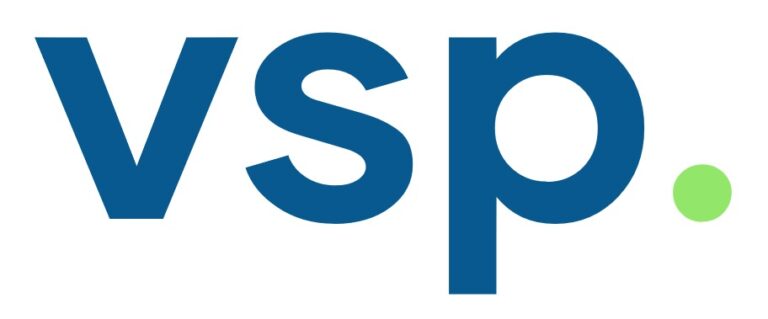Dynamic Financing Solutions for Established Real Estate Developers

Established developers in the real estate sector have the advantage of a proven track record, substantial experience, and credibility, allowing them to access a wider range of financing options. Despite their established status, these developers often face challenges like market fluctuations, execution risks, and the need to maintain a competitive edge. To optimize capital structure and scale operations, they increasingly rely on innovative financing solutions such as Construction Funding, Lease Rental Discounting (LRD), and Unsold Inventory Funding.
Innovative Financing Options for Established Developers
1. Construction Funding
Construction funding is a specialized financing method designed to support the construction phase of real estate projects. This type of funding helps developers cover expenses such as materials, labor, permits, and other related costs. Funds are typically disbursed in stages as the project progresses, ensuring that capital is available when needed and managing cash flow efficiently.
The loans are short-term and tied to project-specific milestones. While interest rates for construction loans are generally moderate, they are higher compared to other loans due to the inherent project risks. Factors like credit ratings and the developer’s track record play a crucial role in securing favorable terms.
Example: A real estate developer plans to build a large residential complex in a metropolitan area. They secure a construction loan, disbursed in phases, for land acquisition and construction-related expenses. As the project progresses, funds are released based on detailed reports submitted to the lender, ensuring disciplined financial management and timely completion.
This example shows how construction funding allows established developers to efficiently manage the financial demands of large-scale projects, ensuring that resources are available throughout the construction process.
2. Lease Rental Discounting (LRD)
LRD allows developers to secure loans by leveraging rental income from leased properties. Developers pledge future rental receipts to lenders, who then provide loans based on the discounted value of those future rentals. LRD is popular for its lower interest rates, extended tenures, and flexibility, offering developers immediate liquidity without the need to sell properties.
Example: A developer owns a commercial property generating steady rental income. To fund a new residential project, they opt for LRD instead of a traditional loan. By pledging rental income, the developer secures a loan at a lower interest rate of 9%. The rental income is used to repay the loan over time, allowing the developer to begin the new project while retaining control over the commercial property.
This example highlights how LRD offers developers a low-cost financing solution while maintaining ownership of their rental assets.
3. Unsold Inventory Funding
Unsold inventory funding is designed to provide liquidity against unsold units of completed projects. This financing option helps developers manage cash flow, cover operational expenses, and invest in new projects while waiting for units to be sold. Since unsold units serve as collateral, this type of loan typically comes with moderate interest rates, ranging from 11% to 14%.
Example: A developer has completed a residential project but still has unsold units. They approach a bank for unsold inventory funding, securing a loan based on the value of these units. The moderate interest rate of 11-14% helps cover ongoing costs and reduces existing debt, allowing the developer to focus on selling the remaining inventory.
This example shows how unsold inventory funding provides developers with the liquidity to manage operations and invest in new projects while navigating slower-than-expected sales.
Advantages of Modern Financing Solutions for Established Developers
- Tailored Financial Solutions: Established developers benefit from customized financial products. For instance, construction funding and LRD offer flexibility in repayment terms and loan disbursement schedules, allowing developers to align financing with project timelines and cash flow needs.
Example: A developer has multiple projects underway. By using LRD for one project and construction funding for another, they can stagger repayment schedules, ensuring that cash flow remains steady across all projects.
- Access to Large-Scale Financing: These solutions provide the necessary capital to undertake large-scale projects. Construction funding helps developers scale operations, while LRD and unsold inventory funding offer liquidity without requiring developers to sell valuable assets.
Example: A developer wants to launch a high-rise commercial complex. With a construction loan, they secure substantial funding quickly, enabling them to proceed with the project without delay, even if other financing options may take longer to arrange.
- Improved Cash Flow Management: Innovative financing solutions like LRD and unsold inventory funding ensure developers maintain liquidity and manage cash flows effectively. This allows them to keep projects on track and invest in new opportunities.
Example: A developer facing a cash flow crunch due to slow sales can utilize unsold inventory funding to bridge the gap. The liquidity gained enables them to pay subcontractors promptly, thus preventing project delays.
- Enhanced Investor Confidence: Securing innovative financing solutions can enhance investor confidence. Demonstrating a solid financial strategy and access to flexible funding can attract more investment opportunities and partnerships.
Example: An established developer successfully uses LRD for a flagship project, showcasing financial stability and effective management to potential investors. This positive track record can lead to more favorable terms in future investments.
- Opportunity for Strategic Expansion: Modern financing options allow developers to capitalize on timely opportunities in the market. By accessing quick funds, developers can invest in attractive projects that arise unexpectedly, ensuring they don’t miss out on lucrative prospects.
Example: A developer hears of a prime piece of land going up for sale at an attractive price. Using construction funding secured from previous projects, they can swiftly acquire the land and develop it, maximizing returns on investment.
Risks Involved in Modern Financing Solutions
- Moderate to High-Interest Rates: While construction funding and unsold inventory funding offer liquidity, the interest rates can be moderate to high compared to traditional loans. Developers need to carefully assess the cost of borrowing, as higher rates may impact profitability.
Example: If a developer secures a construction loan at a 14% interest rate, the increased costs may eat into the profit margin, making the project less financially viable if the expected sales price doesn’t align with the inflated expenses.
- Market Risk: Developers using LRD or unsold inventory funding are still exposed to market risk. If rental income or unit sales fall short of expectations, they may face challenges in repaying loans, leading to financial strain.
Example: A sudden economic downturn results in increased vacancy rates, impacting rental income from a property pledged for LRD. This could strain the developer’s cash flow and make it difficult to service their debt.
- Collateral-Based Risk: In unsold inventory funding, developers pledge unsold units as collateral. If these units remain unsold for a long period, it could lead to financial instability or the possibility of defaulting on loans.
Example: If a developer is unable to sell units in a competitive market, they might find themselves in a position where they cannot meet their loan obligations, risking foreclosure on the pledged inventory.
- Complexity of Loan Agreements: Modern financing solutions often come with complex terms and conditions. Developers must thoroughly understand the fine print to avoid unexpected fees, penalties, or adverse conditions that could arise later.
Example: A developer might overlook a clause in an LRD agreement that triggers higher interest rates if rental income dips below a certain threshold, leading to unforeseen financial pressure.
- Dependency on External Market Conditions: Many modern financing solutions are influenced by external economic factors. Interest rates may fluctuate, and market conditions can change, impacting the developer’s overall financial strategy.
Example: A developer relying on LRD might find that rising interest rates make their current rental agreements less profitable, making it difficult to meet their repayment obligations without adjusting their leasing strategy or raising rental prices
Conclusion
For established developers, modern financing solutions such as construction funding, Lease Rental Discounting (LRD), and unsold inventory funding provide essential capital to scale operations, manage liquidity, and optimize cash flow. These options offer flexibility and tailored terms that are more suitable for large, complex projects. However, developers must carefully evaluate the risks, including higher interest rates and market volatility, to ensure sustainable growth and financial stability.
By leveraging these smart financing tools, established developers can continue expanding their portfolios and maintain a competitive edge in the dynamic real estate market.



